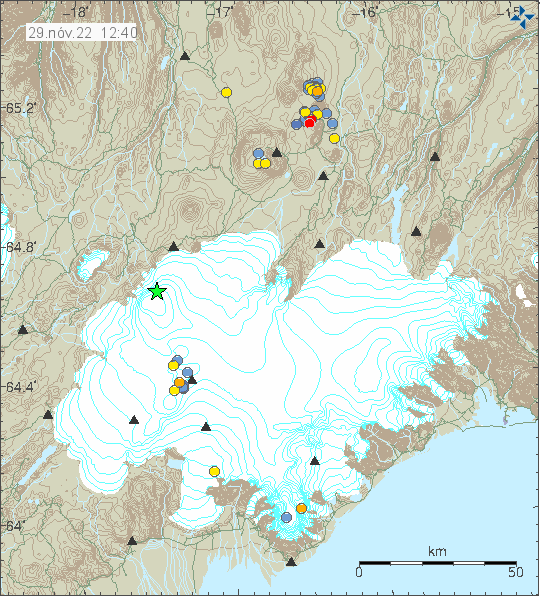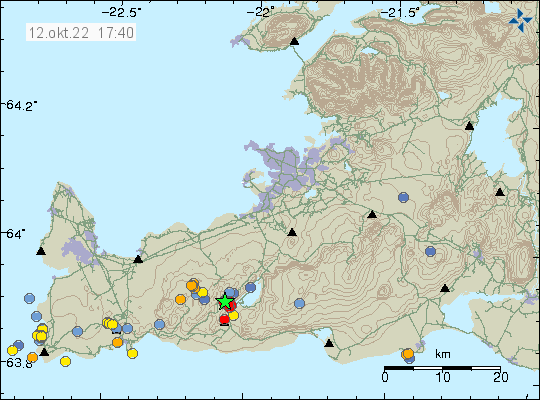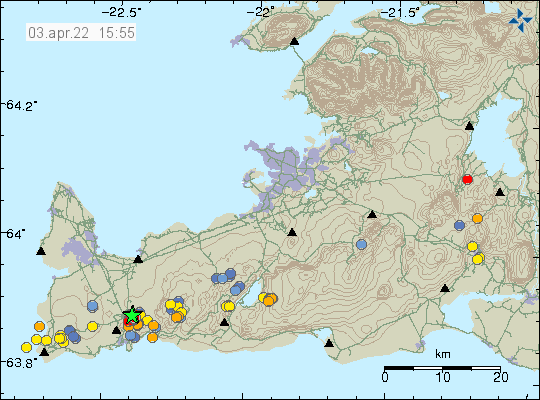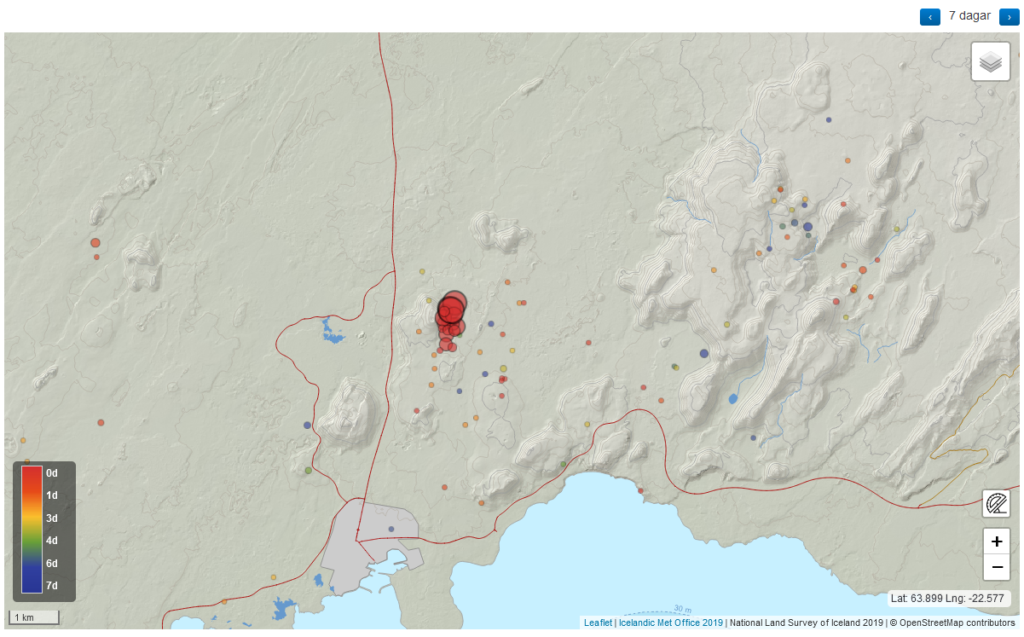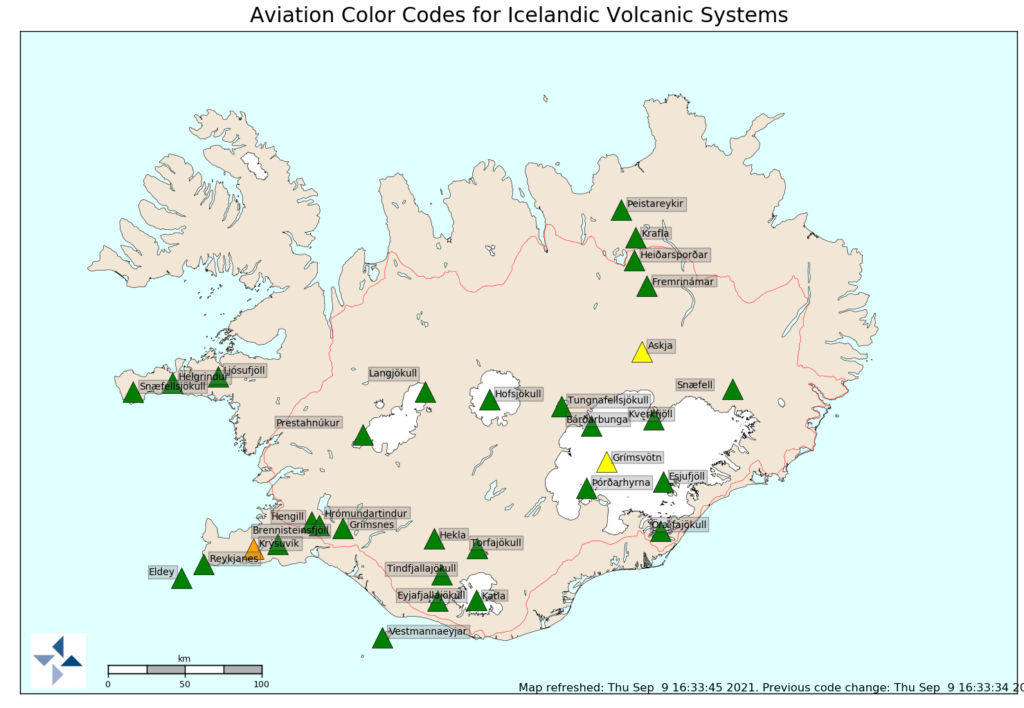Today (21. February 2023) at 08:41 UTC an earthquake with magnitude of Mw4,9 took place in Bárðarbunga volcano. This is because of inflation that is now happening in Bárðarbunga volcano and has been going on since end of Holuhraun eruption in 2015. Earthquakes with this type of magnitude are going to happen once or twice a year until Bárðarbunga volcano is ready for next eruption and that can take decades. There are going to be smaller earthquakes between larger earthquakes. According to the news, this earthquake was felt in Akureyri.
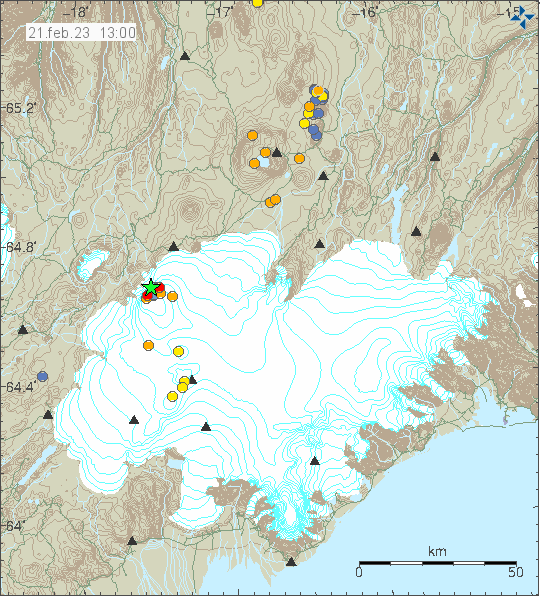
Last time this happened it took 112 years between eruptions in Bárðarbunga volcano. With the quiet period between 1902 and until 2014. Shortest time between eruptions seems to be around 40 years, but most eruptions happen between 90 to 112 years from last eruption. Based on the data from Global Volcanism Program on Bárðarbunga volcano. There is a lot of uncertainty in this data, so this might be shorter from what it looks like in the data.
I’ve switched to using standard definition for earthquake magnitudes, as shown here (Wikipedia). This is for clarification and simplification when I am writing about earthquakes.

